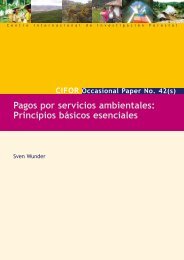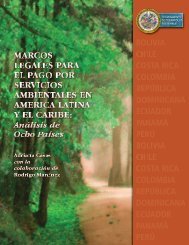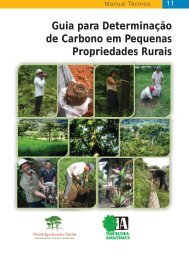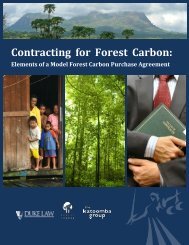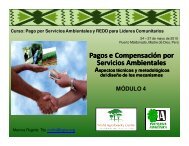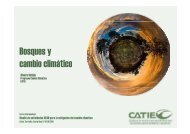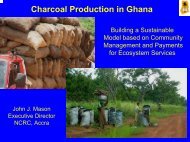Guide on Climate Change and Indigenous Peoples
Guide on Climate Change and Indigenous Peoples
Guide on Climate Change and Indigenous Peoples
- No tags were found...
Create successful ePaper yourself
Turn your PDF publications into a flip-book with our unique Google optimized e-Paper software.
Role of the USin mitigati<strong>on</strong><strong>and</strong> treatmentof the US- US must betreated likeany otherdevelopedcountry even ifit is not a partyto the KP;- Comparabilityof efforts: ifUSA does notjoin KP, itscomparablecommitmentshould bebound in theUNFCCC in aCOP Decisi<strong>on</strong>.- COPdecisi<strong>on</strong>s arelegally binding,c<strong>on</strong>trary towhat is beingspread that<strong>on</strong>ly a protocolis legallybinding.- Developed countriesin a dilemma. First,they insisted thatthe US should makeequal commitmentsas other A1 countries;- Now, some (Japan)may accept the USlow commitment <strong>and</strong>“bottom-up approach”then attempt to dolikewise (Japan’s lowtarget of 8% reducti<strong>on</strong>for 1990-2020);- US wants to have itsown nati<strong>on</strong>al target inUS domestic law <strong>and</strong>have this menti<strong>on</strong>edin a new agreement;- In the Waxman-Markey Bill, whichwas adopted bythe US House ofRepresentatives, itstarget is to reduceemissi<strong>on</strong>s to 17% of2005 levels by 2050(way below the 85%target by 2050 of1990 levels);- It also wantsall countrieswith”significantemissi<strong>on</strong>s profile”to do likewise (e.g.,China <strong>and</strong> India);- EU already loweredits target (to 20% from30%), with greateroffsets. Will it maintainthis or even go lowerif other A1 countriesjump ship?- Insisted that the USshould commit equalto other A1 countries- US should makeequal or highercommitments as it isstill the highest emitterper capita;.- US should not relylargely <strong>on</strong> offsets tomeet its emissi<strong>on</strong>targets;- Should pay climatedebt by providingadequate <strong>and</strong>predictable finance<strong>and</strong> ensure transferof mitigati<strong>on</strong><strong>and</strong> adaptati<strong>on</strong>technologies todeveloping countries<strong>and</strong> indigenouspeoples <strong>and</strong> localcommunities <strong>on</strong>a c<strong>on</strong>cessi<strong>on</strong>arybasis. Intellectualproperty rights (IPRs)requirements shouldbe relaxed whentransferring climatefriendlytechnologies;- These points alsoapply to A1 countries;- <strong>Indigenous</strong> peoplesshould participate indeciding mitigati<strong>on</strong>measures to ensurethat these do nothave negative socioec<strong>on</strong>omicimpacts<strong>on</strong> them. Their rightsshould not be violated<strong>and</strong> their free, prior<strong>and</strong> informed c<strong>on</strong>sent(FPIC) should beobtained whenmitigati<strong>on</strong> measuresare put in place (e.g.,hydroelectric dams,REDD, etc.).128 <str<strong>on</strong>g>Guide</str<strong>on</strong>g> <strong>on</strong> <strong>Climate</strong> <strong>Change</strong> <strong>and</strong> <strong>Indigenous</strong> <strong>Peoples</strong>



